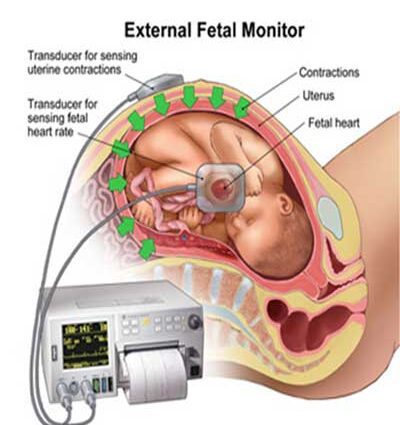Contents
How is CTG done during pregnancy, for how long
Cardiotocography, or CTG, is an examination of a pregnant woman and fetus to assess their condition. How CTG is done is a question that can worry suspicious women. Calm down: the procedure is neither difficult nor dangerous. It can be done daily if necessary.
Why is CTG done for pregnant women?
High technologies actively used in obstetric practice reduce the risk of sudden death of a child or mother. High information content and timely detection of possible pathology allow the doctor to respond in time to trouble.
Doctors do CTG so that the pregnant woman is as comfortable as possible
CTG is performed to exclude pathological conditions:
- fetal hypoxia;
- polyhydramnios or low water;
- aging and other pathologies of the placenta;
- development of intrauterine infection;
- heart abnormalities.
Diagnostic equipment will show abnormal abnormalities, preventing, for example, premature birth or intrauterine fetal death.
How long is CTG done? The examination is scheduled from the third trimester, after the 32nd week of pregnancy. During this period, the diagnostic results are absolutely reliable, since the connection between the baby’s movements and his heart rate has been established.
How is CTG done during pregnancy?
The essence of cardiotocography is to obtain information about the heart rate (heart rate) of the child in the phase of active movement, as well as to record the state of the muscles of the uterus in response to fetal movements. This is a completely safe procedure that does not bring any discomfort to a woman.
It is carried out as follows:
- The pregnant woman takes a comfortable position. This is the main condition for the reliability of the examination, so a woman can sit, lie on her side or back.
- With the help of elastic straps, two sensors are attached to the navel and uterus area. Ultrasound records the baby’s heartbeat, and tensometric – the contractions of the uterus.
- In her hand, the pregnant woman holds a remote control, the button of which she presses, feeling the movement of the fetus.
The procedure, unlike ultrasound or Doppler ultrasound, takes a long time. Within 50 minutes, a special device registers all movements of the child, heart rate, uterine contractions. That is why it is important for the pregnant woman to be comfortable: discomfort will negate the reliability of the results obtained.
CTG is a modern highly informative procedure that allows you to notice pathological changes in the course of pregnancy. It is carried out using special equipment in a comfortable environment.










